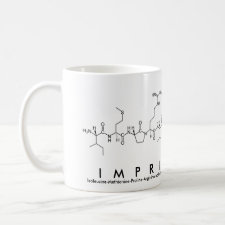
Authors: Sun H, Li Y, Yang JJ, Sun XL, Huang CN, Zhang XD, Chen JP
Article Title: Preparation of dummy-imprinted polymers by Pickering emulsion polymerization for the selective determination of seven bisphenols from sediment samples.
Publication date: 2016
Journal: Journal of Separation Science
Volume: 39
Issue: (11)
Page numbers: 2188-2195.
DOI: 10.1002/jssc.201501305
Abstract: The dummy molecularly imprinted polymers were prepared by Pickering emulsion polymerization. 4,4'-(1-Phenylethylidene) bisphenol was selected as the dummy template to avoid the leakage of the target bisphenols. The microsphere particles were characterized by scanning electron microscopy and nitrogen adsorption-desorption measurements, demonstrating that the regular-shaped and medium-sized particles (40-70 μm) were obtained with a specific surface area of 355.759 m2/g and a total pore volume of 0.561 cm3/g. The molecular imprinting properties of the particles were evaluated by static adsorption and chromatographic evaluation experiments. The association constant and maximum adsorption amount of bisphenol A were 0.115 mmol/L and 3.327 μmol/g using Scatchard analysis. The microsphere particles were then used as a solid-phase extraction sorbent for selective extraction of seven bisphenols. The method of dummy molecularly imprinted solid-phase extraction coupled with high-performance liquid chromatography and diode array detection was successfully established for the extraction and determination of seven bisphenols from environmental sediment samples with method detection limits of 0.6-1.1 ng/g. Good recoveries (75.5-105.2%) for sediment samples at two spiking levels (500 and 250 ng/g) and reproducibility (RSDs < 7.7%, n = 3) were obtained
Template and target information: 4,4'-(1-Phenylethylidene) bisphenol, BPAP, template, bisphenols, bisphenol A, BPA, bisphenol B, BPB, bisphenol F, BPF, bisphenol AF, BPAF, bisphenol E, BPE, bisphenol S, BPS, bisphenol Z, BPZ
Author keywords: Bisphenols, Dummy molecularly imprinted polymers, high-performance liquid chromatography, Sediment samples, Solid-phase extraction



Join the Society for Molecular Imprinting

New items RSS feed
Sign-up for e-mail updates:
Choose between receiving an occasional newsletter or more frequent e-mail alerts.
Click here to go to the sign-up page.
Is your name elemental or peptidic? Enter your name and find out by clicking either of the buttons below!
Other products you may like:
 MIPdatabase
MIPdatabase









